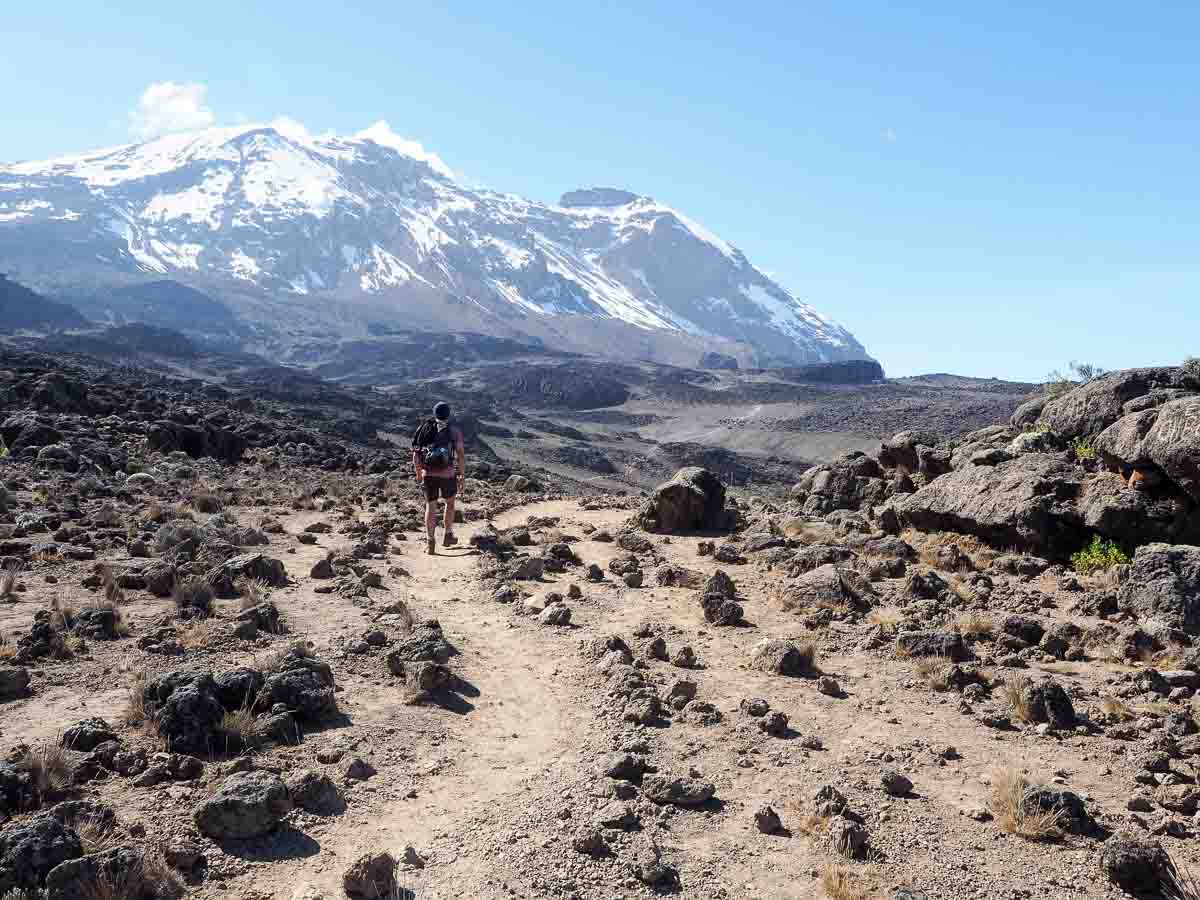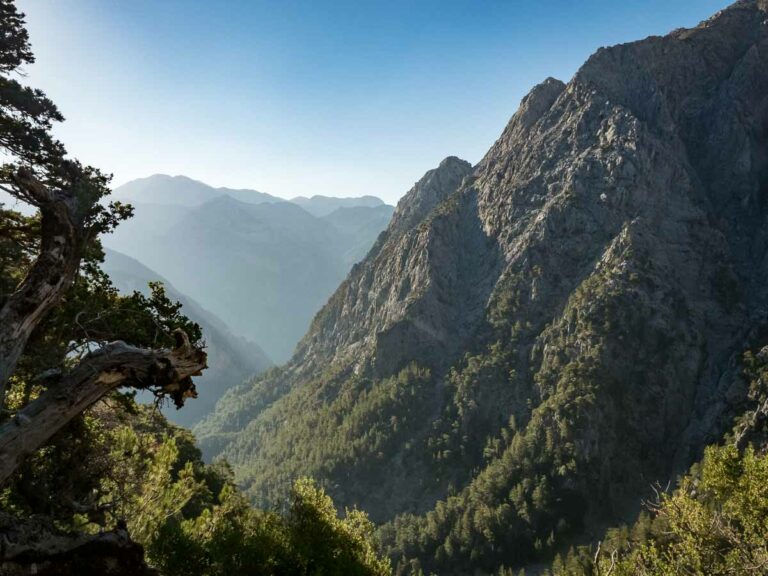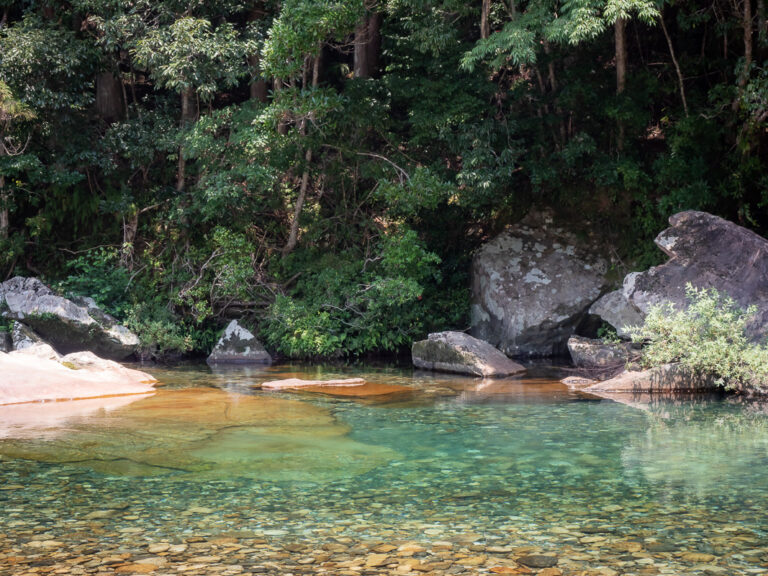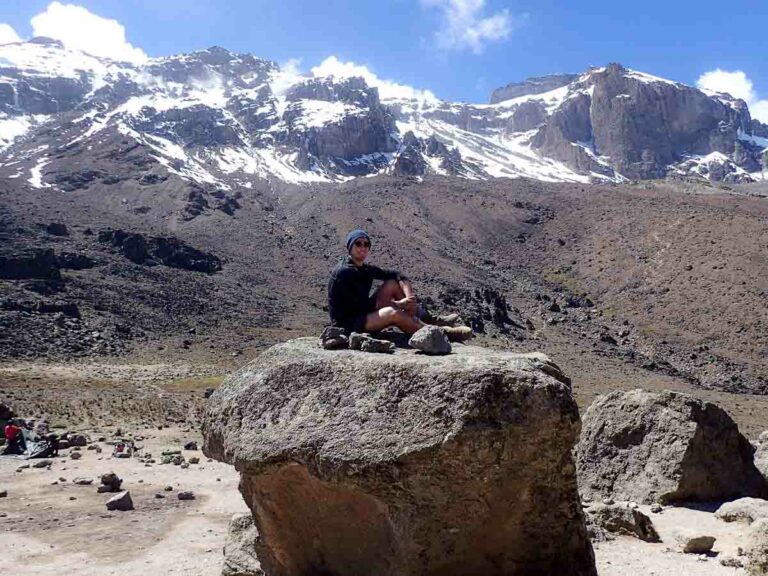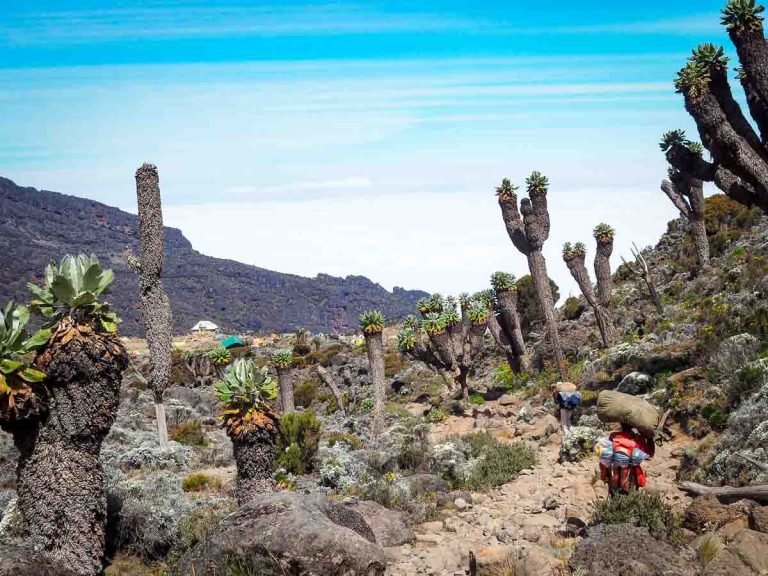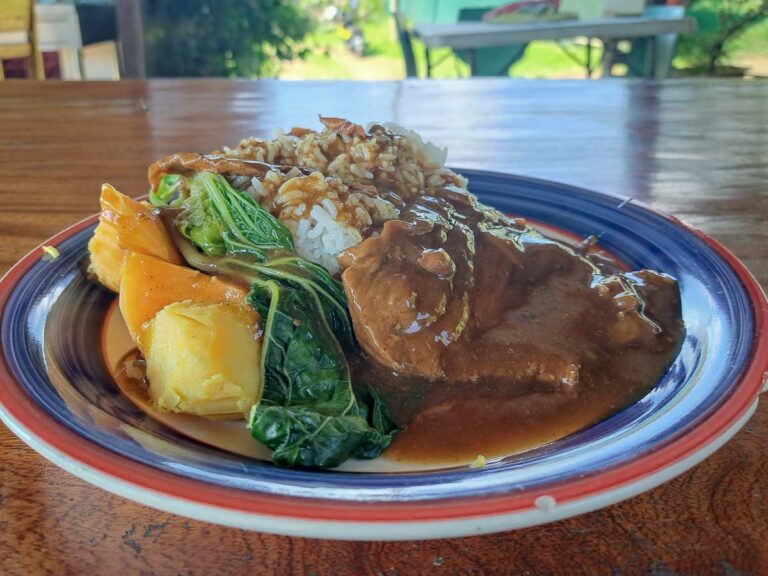Climbing Kilimanjaro Without A Guide (3 Options)
If you’re thinking about climbing Mount Kilimanjaro, you might be wondering whether it’s possible to do so without a guide. The answer is yes, but it’s important to carefully consider your options before embarking on this challenging adventure.
In this post, I’ll explore the three main ways to climb Kilimanjaro, including the pros and cons of each option. Whether you’re an experienced hiker or a first-timer, this guide will help you decide which method is right for you.
Table of Contents
Option 1: Climbing Kilimanjaro Independently
If you’re an experienced hiker and are confident in your ability to navigate challenging terrain, you may be able to climb Kilimanjaro independently. This means that you’ll be responsible for planning and executing the climb on your own, without the assistance of a guide or porters.
While this option may be appealing to some, it’s important to note that climbing Kilimanjaro is a serious undertaking. The mountain is the highest peak in Africa, and the climb includes steep ascents, high altitudes, and unpredictable weather conditions. Additionally, the mountain is located in a remote area of Tanzania, which can make it difficult to access necessary resources and support.
If you’re considering climbing Kilimanjaro independently, it’s essential that you do your research and prepare thoroughly. You should be in excellent physical condition, have experience with high-altitude hiking, and have all the necessary gear and supplies. You’ll also need to obtain any required permits and follow all park regulations.

Option 2: Climbing Kilimanjaro Without Porters
Another option for climbing Kilimanjaro is to do so without the assistance of porters. Porters are hired by many climbers to carry their gear and supplies up the mountain, which can make the climb easier and more comfortable. However, some climbers choose to forego this assistance and carry their own gear.
Climbing Kilimanjaro without porters can be a rewarding and challenging experience. It allows you to test your physical limits and fully immerse yourself in the climb. However, it’s important to note that this option is not for everyone. Carrying your own gear can be physically demanding, and it may detract from your ability to fully enjoy the climb.
If you’re considering climbing Kilimanjaro without porters, it’s essential that you prepare thoroughly. You should be in excellent physical condition and have experience with high-altitude hiking. You’ll also need to carefully select your gear and supplies to ensure that you can carry everything you need.

Option 3: Climbing Kilimanjaro With a Full Crew
The most common way to climb Kilimanjaro is with the assistance of a full crew. This typically includes a chief guide, assistant guides, a cook, and porters. The guides will help you navigate the mountain, while the cook will provide meals and the porters will carry your gear.
Climbing Kilimanjaro with a full crew can be a great option for many climbers. It takes much of the physical burden off of you and allows you to focus on enjoying the climb. Additionally, the crew is experienced with the mountain and can provide valuable guidance and support throughout the climb.
However, it’s important to note that climbing Kilimanjaro with a full crew can be expensive. You’ll need to pay for the services of the crew, as well as for food, gear, and permits. Additionally, you’ll need to follow the regulations set forth by the park, which can include restrictions on the size of your crew and the gear you can bring.
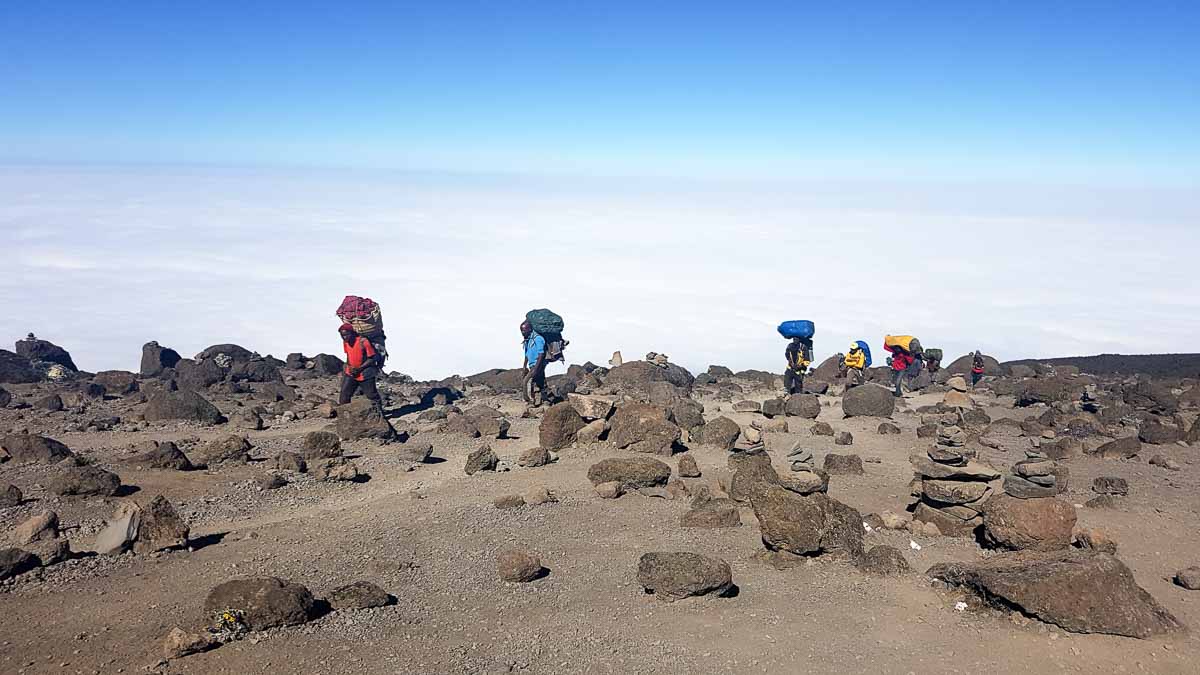
The Make-Up of a Typical Climbing Crew
If you choose to climb Kilimanjaro with a full crew, it’s important to understand the roles and responsibilities of each member. Here’s a breakdown of the typical crew:
1. Chief Guide
The chief guide is the leader of the crew and is responsible for ensuring the safety and success of the climb. They’ll help you navigate the mountain, make decisions about the route, and provide guidance and support throughout the climb.
The chief guide runs the show. He tells everyone what they can and cant do, and is responsible for the success of the whole expedition. They also makes sure their team get paid fairly at the end!
2. Assistant Guide(s)
Assistant guides work alongside the chief guide to help you navigate the mountain. They may also assist with other tasks, such as setting up camp and cooking meals.
On my trek I was able to go off with the assistant guide at my own pace, so i didn’t need to wait around for the whole good. This was a lot of fun, and meant we could to some exploring (side quests) along the track.
Cook
The cook is responsible for providing meals throughout the climb. They’ll prepare nutritious and tasty meals to keep you fueled and energized throughout the climb.
Honestly, every day I was blown away by what they were able to prepare in such basic conditions. The cooks on Kili are absolute legends!!
Porters
Porters are responsible for carrying your gear up the mountain. They’ll carry everything from your tent and sleeping bag to your food and water (if you want them to).
The treatment of porters is constantly improving and now all bags are weighted before and at various points during the hike. They are limited to carrying 20kg on their head which is still a terrifying amount of weight, considering most have backpacks too.
I tried carrying what one of my porters carried just for a few hours and my neck was sore for a week!!
/image
I even met a porter who was hired solely to carry the portable toilet required by a group (by law) that are going to camp in the crater. Nasty!
Tipping
It’s common practice to tip your crew at the end of the climb. The amount of the tip will depend on the size of your crew and the length of the climb, but it’s typically around 10-15% of the total cost of the climb.
| Role | Typical Tip for Average Service | Tip for Above Average Service (+%) | Tip for Below Average Service (-%) |
| Chief Guide | 20-25% of total cost ($400-$500) | Additional 5-10% of total cost ($100-$250) | Deduct up to 10% of total cost ($200-$500) |
| Assistant Guide | 15-20% of total cost ($300-$400) | Additional 3-5% of total cost ($60-$100) | Deduct up to 5% of total cost ($100-$200) |
| Cook | 10-15% of total cost ($200-$300) | Additional 2-3% of total cost ($40-$90) | Deduct up to 3% of total cost ($60-$90) |
| Porter | $10-$15 per day | Additional $5 per day | Deduct up to $5 per day |
Note that the dollar amounts and percentages are based on the assumption of a $2000 total cost for the climb. These amounts may vary depending on the specific circumstances and performance of the crew member.
Companies Who Run ‘Porter-Free Treks’
If you’re interested in climbing Kilimanjaro without porters, there are a few companies that offer ‘porter-free treks.’ These treks typically include a smaller crew, with hikers carrying their own gear. While they can be more physically demanding, they can also be a great way to fully immerse yourself in the climb.
Three Points About Climbing Kilimanjaro With No Porters
If you choose to climb Kilimanjaro without porters, there are a few things to keep in mind:
1) It’s Physically Demanding
Carrying your own gear up the mountain can be physically demanding, especially at high altitudes. It’s important to be in excellent physical condition and to carefully select your gear and supplies.
2) You Should Still Get a Good Service
Even if you’re not using porters, you should still expect a high level of service from your crew. They should be experienced with the mountain and able to provide guidance and support throughout the climb.
3) This Style of Trek is Definitely Not for Everyone
Climbing Kilimanjaro without porters is a challenging and demanding experience. It’s not for everyone, and it’s important to be honest with yourself about your abilities and limitations.
4) Climbing Kilimanjaro With No Porters Does Seem to Reduce Your Chances of Getting to the Top
While it’s possible to climb Kilimanjaro without porters, it’s important to note that this option does seem to reduce your chances of reaching the summit. The climb is physically demanding, and carrying your own gear can detract from your ability to fully enjoy the climb.
Conclusion
Climbing Mount Kilimanjaro is an incredible experience, but it’s important to carefully consider your options before embarking on this challenging adventure. Whether you choose to climb independently, without porters, or with a full crew, it’s essential that you prepare thoroughly and understand the risks and challenges involved. With the right preparation and mindset, however, climbing Kilimanjaro can be an unforgettable experience that you’ll cherish for years to come.
[block id=”kilimanjaro-travel-cheatsheet”]

